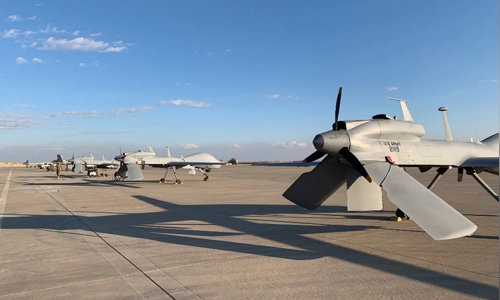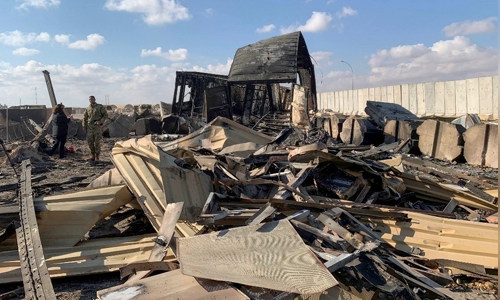US forces at the al-Asad base lost contact with seven expensive drones when Iranian missile strikes occurred.
Shortly after the first Iranian ballistic missile strikes hit Ain al-Asad air base on the outskirts of Baghdad, Iraq at 1:30 on January 8, US troops there lost contact with a series of aircraft. Unmanned (UAV) is referred to as "the eye of the air".

Gray Eagle squadron at Ain al-Asad base on 13 January Photo: AFP
At that time, the US military was deploying 7 UAVs in Iraqi airspace to monitor coalition bases, including MQ-1C Gray Eagles, at a cost of more than $ 7 million each.
"We thought the air strike could open the ground for attacks, so the number of these drones continued in the air," Sergeant Costin Herwig, a pilot of the MQ-1C UAV pilot at the base. Ain al-Asad, said.
Most of the 1,500 US troops at the base sheltered in the underground bunker thanks to early warning from the commander about Iran's missile strike. However, 14 pilots still clung to the control center placed in a container to control the UAV squadron. The first Iranian rocket exploded nearby and blew dust into the control compartment.
"The bullets subsequently fell closer and closer and I accepted my fate. We thought we were dead," recalls Herwig. However, it is not yet a real crisis in Ain al-Asad. The attack lasted about three hours, in which many Iranian ballistic missiles hit the rest area of US soldiers, right next to the control compartment of the UAV squadron.
"Less than a minute after the last rocket exploded, I ran to the rest and saw the fire burned all the fiber," said Sergeant Wesley Kilpatrick. These are the cables that connect the control compartment to the satellite communication antenna to control and receive data from the UAV squadron.
"We lost complete UAV control when those cables were destroyed," Kilpatrick said. The broken data link makes these UAV lost and US troops "completely blind" to the events taking place in Iraqi territory. They could not even tell if the reconnaissance aircraft would be intact after the attack.

An area was destroyed at Ain al-Asad base after the raid on January 8 Photo: AFP
"It is a big problem. UAVs are very expensive and have many top-secret devices that we don't want to fall into the hands of others," Herwig said, saying soldiers would soon have to get into the bunker after losing. Connect with UAV squadron.
As soon as the attack ended, US troops rushed back to the control room to quickly restore the infrastructure and recover the missing UAVs. They replaced a total of 500 m of cables and reprogrammed the satellite connection.
Iranian ballistic missiles have destroyed many areas at Ain al-Asad airport, including runways. The air traffic control tower was completely empty and US forces could not coordinate operations in the airspace around the base. "The airport was closed and we had to land the plane without knowing where the other planes were. It was a very stressful process," recalls Herwig.
Their first priority was to reconnect with the Gray Eagles planning to land on Ain al-Asad as soon as the missile strike began. They must fly continuously in the air for hours and nearly run out of fuel.
The US troops then worked relentlessly to ensure the entire number of lost UAVs returned safely and assess the damage to each one. The last UAV landed in Ain al-Asad at 9am on January 8. "We recovered the entire unmanned aircraft. It was a respectable achievement," Kilpatrick said.



 BarbieDollie
BarbieDollie







